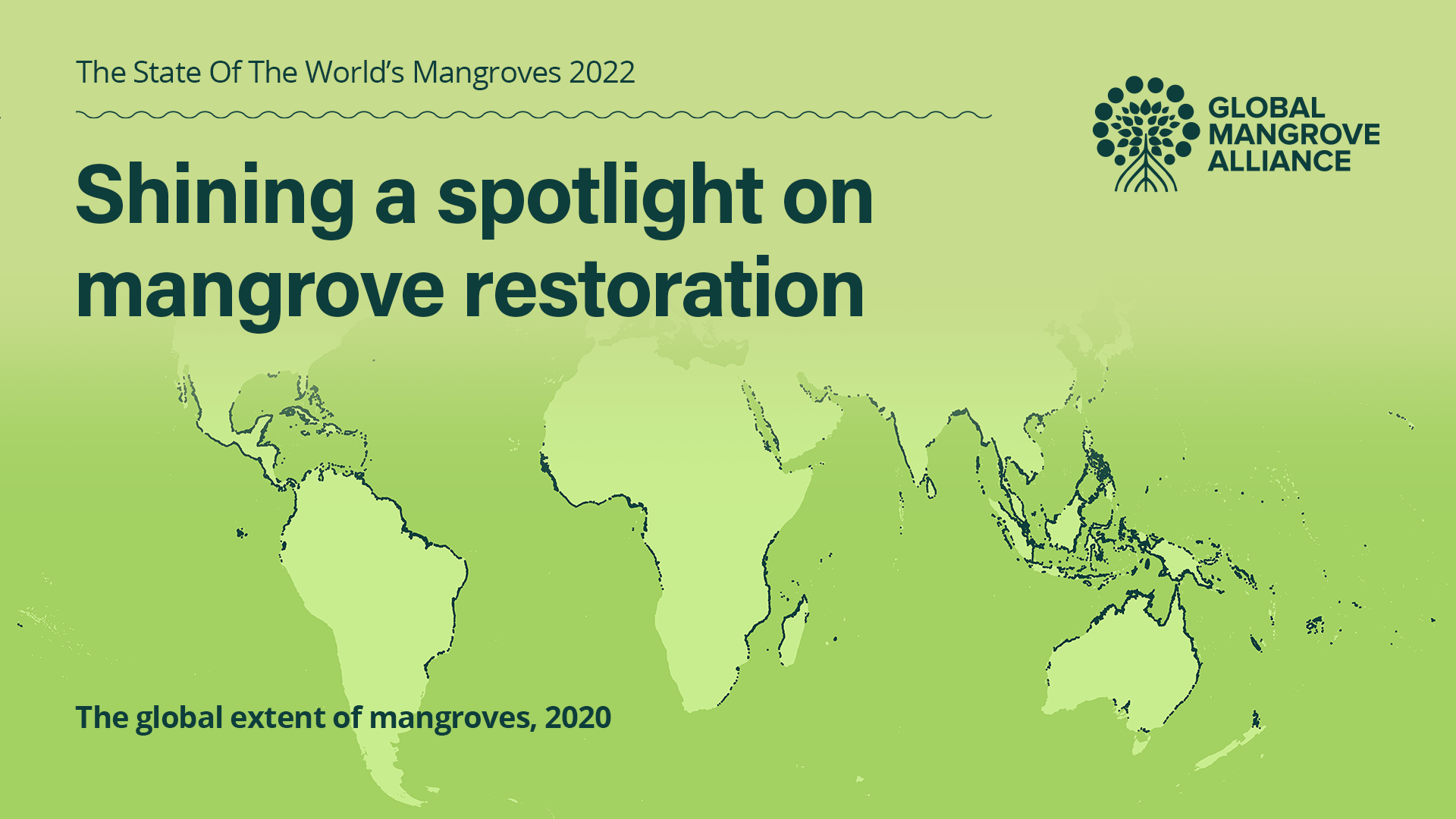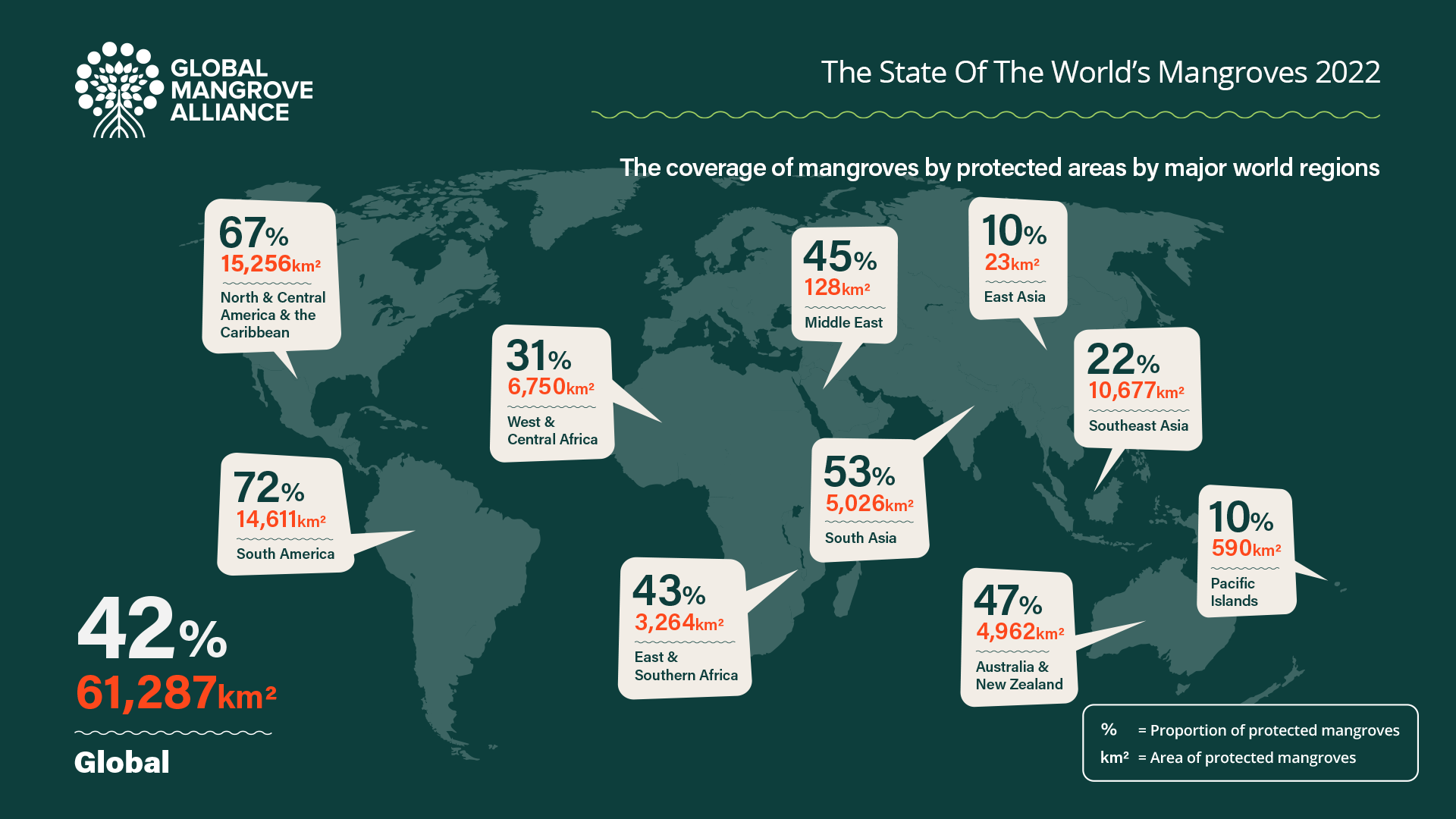Mangroves for Climate Action: Global Mangrove Alliance launches new State of World Mangrove Report, announces Climate Champion Partnership
A new report by the Global Mangrove Alliance, with the help of over 100 mangrove science, finance, and policy experts from around the world, highlights benefits, stories, and global trends – while new announcements with the UN High Level Climate Champions at New York Climate Week set out a pathway for the way ahead to drive finance for mangrove action.
Mangrove forests are critical ecosystems for biodiversity and for humanity. Vast areas have been lost, but things are changing. As we begin to recognize their full value—as carbon stores, fish factories, coastal defenses and more—efforts are being made to protect what remains, and to start programs of restoration.
The Global Mangrove Alliance (GMA), today launched their annual report, The State of the World’s Mangroves 2022, a compilation of the most current information available on what we know about mangrove forests and what’s being done to reverse the downward trends impacting the coastal trees and the local communities who depend on them.
The GMA is a joint effort of more than 30 organizations, including IUCN, working to accelerate mangrove conservation and restoration efforts around the world.
The 2022 edition of The State of the World’s Mangroves describes a surge in our understanding of mangroves globally and multiple points of hope: mangrove loss is declining, we know more about protecting these ecosystems than ever before, and partnerships and global awareness are ever stronger. The tide has yet to turn on loss but we are dedicated to maintaining momentum to support mangrove forests to minimize the impacts of irreversible climate change and the wider biodiversity crisis.
Mark Spalding, Senior Marine Scientist for The Nature Conservancy.
 Photo: Global Mangrove Alliance
Photo: Global Mangrove Alliance
Incredible Benefits of Mangrove Action
- Preventing just 1% of mangrove loss results in two hundred million tons of carbon locked away. Restoration of losses since 1996 could safeguard carbon in soil and aboveground biomass equivalent to 1.27gigatons of CO2–equating to over 520 million barrels of oil, or the annual emissions of 49 million cars in the USA
- The GMA goal of “restoring half” of the 8,183km2 of restorable area by 2030, particularly in Southeast Asia, could result in an additional 25 billion commercial marine fish and shellfishand benefit 4.1 million small-scale fishers and countless communities that rely on mangroves fortheir livelihoods
- Mangroves prevent more than $65 billion in property damages from storms and reduce flood risk to some 15 million people every year
- Mangroves are the most efficient carbon capture and storage systems on the planet. They currently store carbon that’s equivalent to over 21 billion tons of CO2
New Data available on the Global Mangrove Watch
The 2022 report demonstrates that we now have access to more extensive and reliable knowledge via data updates to Global Mangrove Watch maps–the evidence base informing the Global Mangrove Alliance–that brings coverage from 2016 up to 2020.The new data shows that we currently have 147,000km2of mangroves remaining worldwide, an area about the size of Bangladesh. The same maps show loss and gains over time.
A net 5,245km2of mangrove forest has been lost since 1996, driven by a combination of direct human impacts such as clearance and conversion, but also by harder to manage changes driven by erosion, inundation, or storms.
While average losses over the last decade have fallen to 0.04% per year and there have been considerable gains in river mouths and deltas, action is still a priority to halt further loss, protect what remains, and restore what has been lost.
Read the full State the World's Mangroves Report here.
 Photo: Global Mangrove Alliance
Photo: Global Mangrove Alliance
Driving Mangrove Action
This scientific report is clear: if we want to implement the promises made at COP26 and raise the level of ambition to meet the Paris Agreement, we must look to mangroves. The climate and the adaptive capacity and resilience of millions of people living on the coasts depend on it.
Nigel Topping and Mahmoud Mohieldin, UN High Level Climate Champions, in the report foreward
Determination to safeguard mangroves is growing at all levels of society. It is increasingly clear that national and local stakeholders will be the catalyst in implementing improved management, conservation, and restoration of mangroves. GMA National Chapters in eight countries are now bringing together GMA members and local partners on the ground with the ambition to connect the broader GMA goals to a targeted local context.
And global political ambition is growing as well. At New York Climate Week today, the Global Mangrove Alliance and UN High Level Climate Champions announced the Mangrove Breakthrough, a joint initiative which aims to drive and unlock public, philanthropic, and private finance for the protection and restoration of mangroves ecosystems as part of the Race to Resilience - with the following headline target:
Invest USD 4 billion to secure the future of 15 million hectares of mangroves globally by 2030 through collective action on halting mangrove loss, restoring half of recent losses, doubling protection of mangroves globally, and ensuring sustainable long-term finance for all existing mangroves.
The GMA and HLC teams will make further announcements and launch a plan of action at UNFCCC COP27 in Sharm el-Sheikh this November – with the goal to encourage government leaders and diverse stakeholders to accelerate their efforts to protect and restore mangroves and increase investment to keep mangroves standing.
Mangrove protection and restoration represent incredible Nature-based Solutions for climate mitigation, for building the resilience of our coastlines, and for protection of coastal biodiversity and fisheries. IUCN looks forward to working with our Global Mangrove Alliance partners and the High Level Climate Champions on accelerating global ambition on mangrove action at COP27.
Stewart Maginnis, Deputy Director General of Programmes, IUCN
About The Global Mangrove Alliance
In 2018 Conservation International (CI), the International Union for Conservation of Nature (IUCN), The Nature Conservancy (TNC), Wetlands International, and World Wildlife Fund (WWF) formed the Global Mangrove Alliance (GMA). This partnership now includes over 30 member organizations that share the aim of scaling up the recovery of mangroves through equitable and effective expansion of both mangrove protection and the restoration of former mangrove areas. From a practical perspective, the GMA works worldwide in supporting research, advocacy, education and practical projects on the ground with local and community partners.
For more information, see the Global Mangrove Alliance website and the Global Mangrove Watch platform.
Learn more about IUCN’s work on conserving and protecting mangroves…
- Blue Natural Capital Financing Facility



